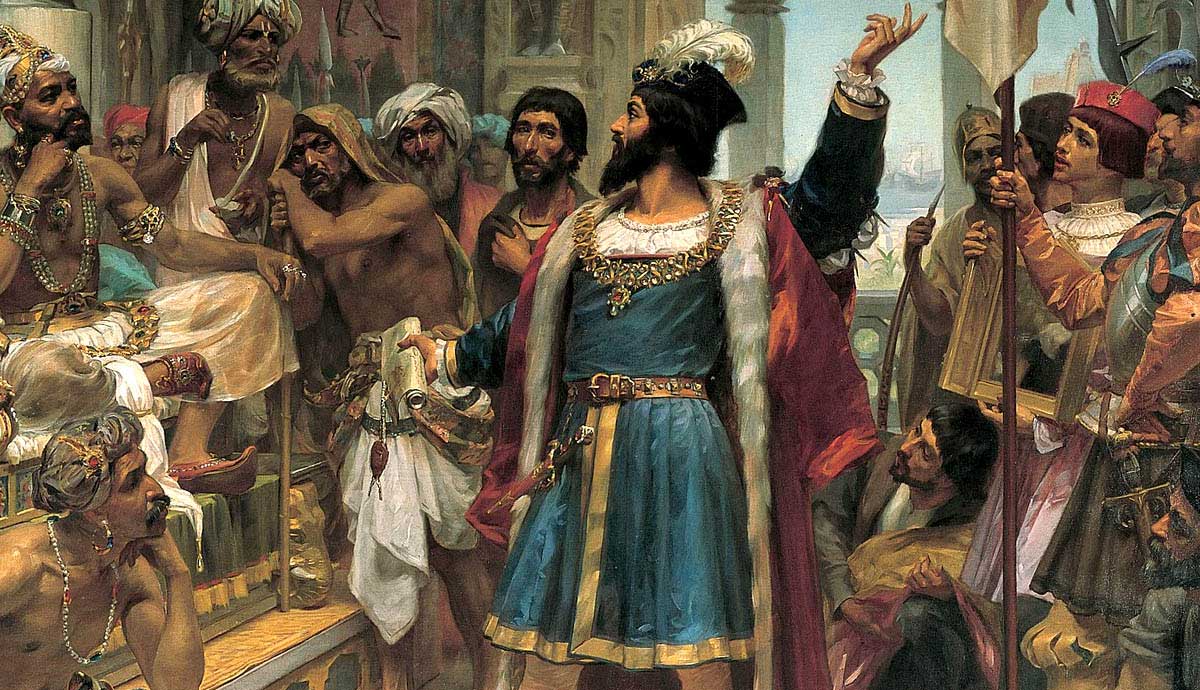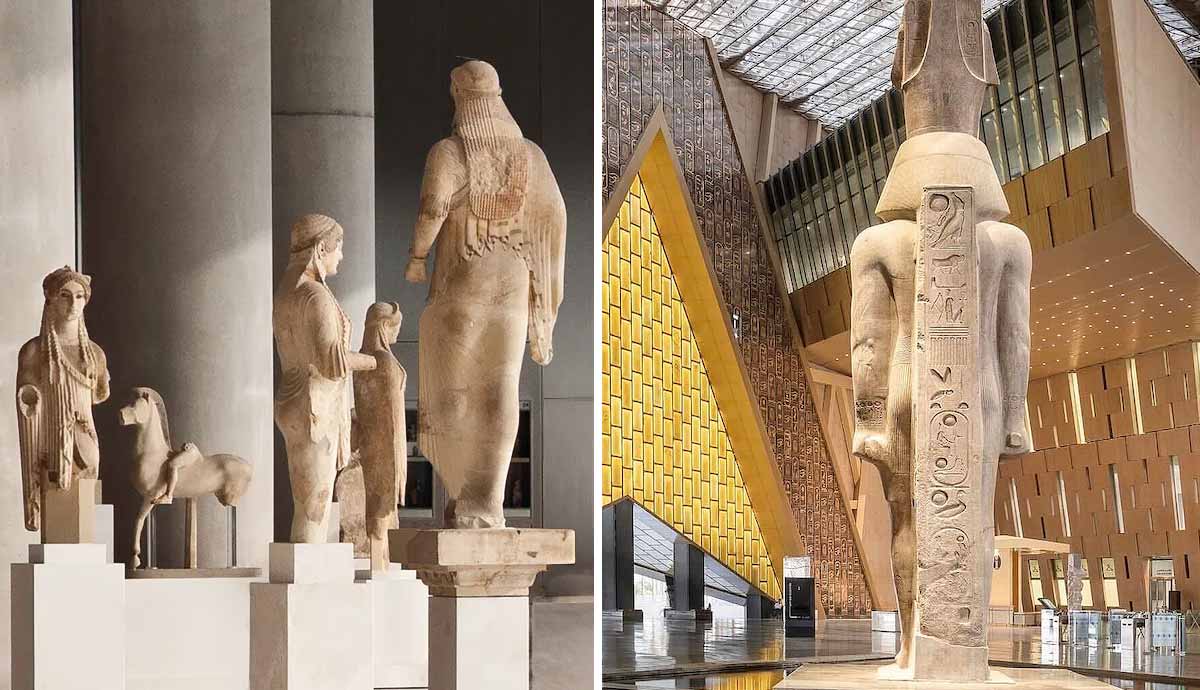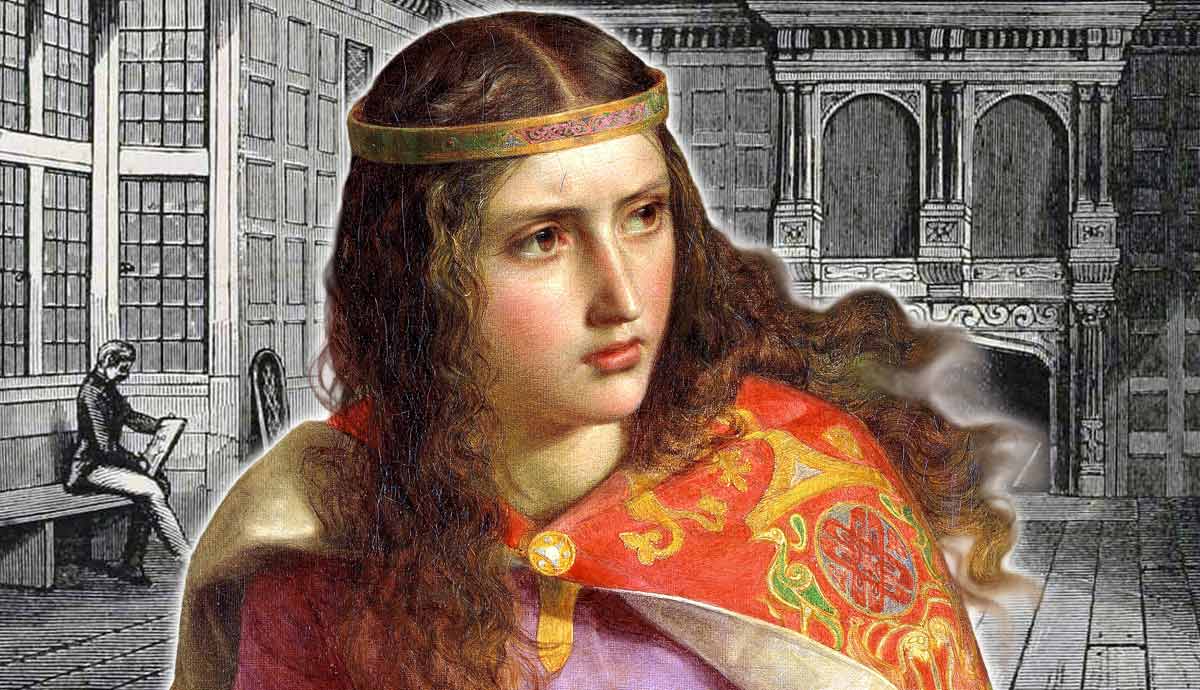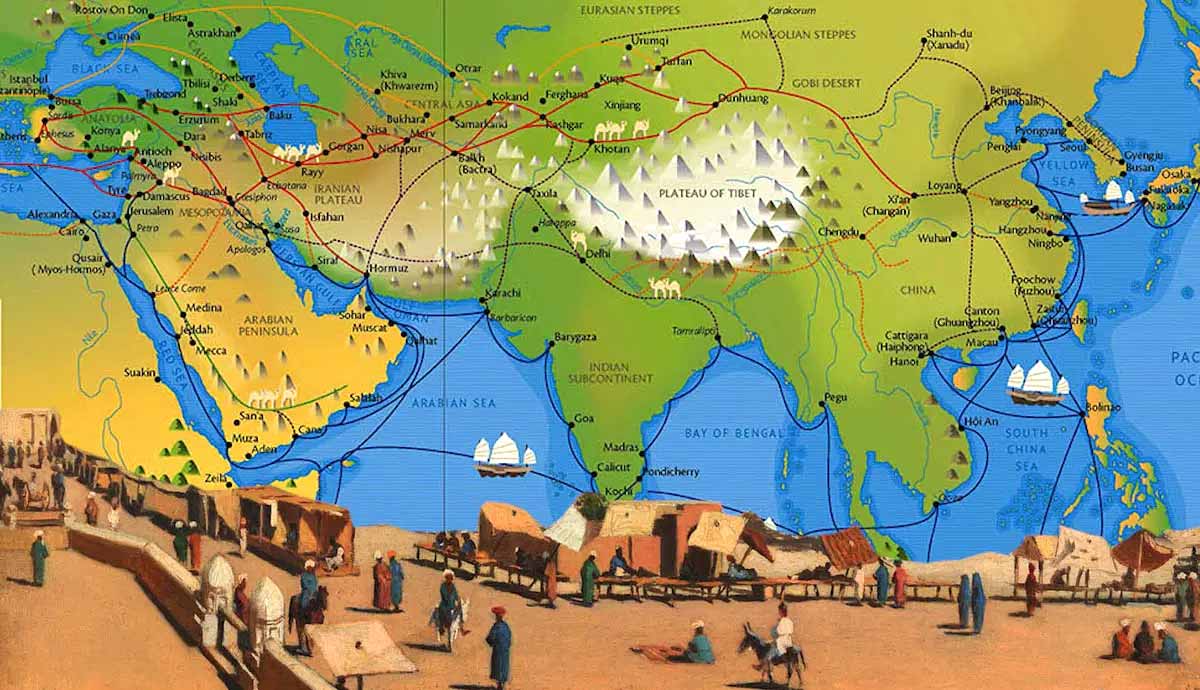
While the Spanish focused their attention on discovering the New World, the Portuguese looked eastward. Southern and Eastern Asia were the centers of their attention, as it was the source of many trade goods such as gold, valuable spices, silk, and other riches. But from Portugal on the very edge of Western Europe all the way to the Orient, the trade route ran over land, and for those who traveled it, it was a slow and dangerous enterprise fraught with perils. So the Portuguese sought a solution. A new trade route would have to be established via the ocean, and the man to find it would be the navigator, Vasco da Gama. This is the story of his exploits.
Vasco da Gama’s Early Life

Vasco da Gama was born into minor nobility in 1460. His father was a household knight who rose through the ranks of civil service, and his mother was part of a well-connected and wealthy family.
When da Gama came of age, he followed in his father’s footsteps and joined the chivalric Order of Santiago. The king invested heavily in the order, and Vasco da Gama’s prospects looked good. In 1482, da Gama was given his first mission as a commander. He was sent to seize French ships that had attacked Portuguese shipping. His success was rapid and effective, and da Gama gained a reputation as being extremely competent.
The First Voyage

On July 8, 1497, Vasco da Gama, with a fleet of four ships and 170 men, departed from Lisbon on a journey to round the Cape of Good Hope on the southern tip of Africa, and travel into the Indian Ocean towards the Indian subcontinent. Accompanying da Gama was his brother Paulo and the famed navigator Bartolomeu Dias, who was the first explorer to round the southern tip of the African continent and provided invaluable advice as they sailed down the western coast of Africa. Also joining the expedition were three interpreters. Two of them spoke Arabic, and the third spoke a number of Bantu dialects.
The expedition was beset by storms, but they did not prove to be much of a problem. The four ships managed to avoid any serious trouble and made several stops along the way, anchoring along the coast and resupplying their vessels with whatever they could find.
They rounded the Cape, and on December 16, they passed the Great Fish River and into territory that no European had sailed into before. As Christmas approached, da Gama decided to name the coast they were traveling past in honor of the birth of Christ. And so the land of “Natal” was named. Today, this province of South Africa carries the name “KwaZulu-Natal.”
They sailed further along the coast, reaching Mozambique in January 1498, and further still until they reached the mouth of the River of Good Omens (now the Zambezi River). Here, they erected a statue to commemorate Portugal and their voyage. Da Gama decided to rest at this location, and the crew, many of whom were suffering from scurvy, spent a month recuperating from their long voyage.

After resting, Vasco da Gama set sail again and traveled north, following the coast until he came to the small Island of Mozambique. The island was under the command of the Sultan of Mozambique, and fearing that he would be hostile to Christians, da Gama impersonated a Muslim and was granted an audience with the Sultan with whom he exchanged gifts. After a while, the island’s population became suspicious and ran da Gama’s party off the island. They escaped, and as they weighed anchor and set sail, da Gama fired his cannons into the city in retaliation.
As they sailed north, da Gama’s expedition raided and looted several merchant vessels before being the first Europeans to visit Mombasa by sea. However, the Portuguese found themselves unwanted guests and, again, had to flee the local populace.
Continuing north, Vasco da Gama’s next stop was the port city of Malindi, which was in a state of conflict with Mombasa, and gave da Gama and his crew a friendlier welcome. It was here that da Gama found an Indian navigator who would help him to navigate the sea between East Africa and India.

In May 1498, Vasco da Gama arrived in Calicut, India and was treated to a grand procession by the Zamorin (king) who returned to Calicut from Ponnani upon hearing of the arrival of a fleet from Europe. However, the gifts da Gama provided failed to impress the ruler, and Muslim traders who considered him a rival suggested da Gama was nothing more than a common pirate. Furthermore, the Zamorin demanded that da Gama be subject to the same rules as any other merchant and pay customs duty, preferably in gold. Angered by this decision, da Gama took several locals by force and left India. He weighed anchor and began the long journey home.
Sailing against the wind, it took 132 days to reach the African coast. Da Gama elected to stop over at Malindi and rest. Half his crew had been lost in the crossing, and many others suffered from scurvy. After resting and refueling, da Gama pressed on with only two ships out of the four that originally left Lisbon.

They sailed on smoothly for a while, rounding the Cape and sailing into the Atlantic. At some unknown point, the two ships got separated (but both made it back to Portugal). Tragedy struck while in the vicinity of Cape Verde as da Gama’s brother, Paulo, fell gravely ill. Da Gama transferred command of his ship and chose to stay in Cape Verde with his brother. They later booked passage to Portugal via a ship traveling from Guinea, but Paulo died en route, and da Gama disembarked when they reached the Azores. He buried his brother and lingered in mourning before hitching a ride back to Lisbon. The entire journey had taken over two years to complete.
Vasco da Gama Back in Portugal

Vasco da Gama received a hero’s welcome, and despite his unfortunate dealings with the Calicut Zamorin, the expedition was a success. Subsequent years would see Portugal sending an annual trading armada via da Gama’s route to trade with India.
As a reward for his efforts, the king of Portugal, Manuel I, gave Vasco da Gama the town of Sines as his personal fief. This caused grief in the Order of Santiago who still owned the town, and of which da Gama was a knight. The strain between da Gama and the Order eventually led da Gama to relinquish his position in the order and join the rival Order of Christ. In 1501, he married Catarina de Ataíde, who was the daughter of a wealthy nobleman.
Meanwhile, an armada sent to trade with the Calicut Zamorin had been embroiled in a disaster. A dispute with the local merchants guild in Calicut had started a riot in which 70 Portuguese were killed. The Portuguese, in retaliation, bombarded the city, and as a result, war broke out between Calicut and Portugal. In light of these events, da Gama offered to take control of the 4th Armada due to set sail in 1502.
The Second Voyage

At the helm of 20 ships, Vasco da Gama’s second voyage was sent out to settle the dispute with the Calicut Zamorin by forcing him to pay tribute to Portugal. On the way to Calicut, the voyage encountered successes in that it made contact with the gold trading port of Sofala and forced the Kilwa Sultanate (a settlement now in modern-day Tanzania) into tribute.
In October 1502, da Gama reached the coast of India and encountered a vessel containing 400 Muslim pilgrims. He looted the ship, locked up its passengers, and burned it, sparing 20 children who were forced to convert to Christianity.
Upon arrival at the coast of Calicut, the Zamorin realized that da Gama was willing to commit great violence and attempted a diplomatic stance with the Portuguese captain. At the same time, he sent a letter to his rebellious vassal, the ruler of Cochin, pleading for assistance in the face of the Portuguese threat. The ruler of Cochin, however, sent the letter on to da Gama, who then added to his demands that the Zamorin expel all Muslims from Calicut.
The Zamorin sent his high priest to conduct talks with Vasco da Gama, but the captain was not interested in negotiating. He cut the emissary’s ears and lips off and sewed dog ears onto his head before sending him back. The Portuguese then opened fire on the city, causing heavy damage. The Zamorin responded by sending a fleet out to do battle. The resultant action was the Battle of Calicut, and in January 1503, da Gama won a crushing victory.
The Death of Vasco da Gama

Despite these successes, the mission was a failure. The Zamorin was not subdued, and Portuguese interests would be subject to reprisals. Knowledge of how he was treated upon return is scarce, but it is likely he fell out of favor with the king. It was only after the death of King Manuel I and the succession of John III that he was again considered for positions of grandeur. In 1524, he was appointed Viceroy of Portuguese possessions in India. Later that year, shortly after his arrival in the city of Cochin, he contracted malaria and died. His remains were taken back to Portugal 15 years later.
Vasco da Gama’s Legacy

Vasco da Gama was a hugely important figure who was critical to the success of Portugal as a colonial empire. Through his voyages, he opened up trade routes and made it clear what Portugal would need to do in order to secure its holdings. In this, he was a vital learning experience for the Portuguese. Today, da Gama’s legacy is held with mixed feelings. His accomplishments are certainly noteworthy, but like many explorers and conquistadors at the time, his methods were brutal. While statues and memorials remain today, many victims of colonialism, and especially Indians, view him in historical terms as an antagonist.










